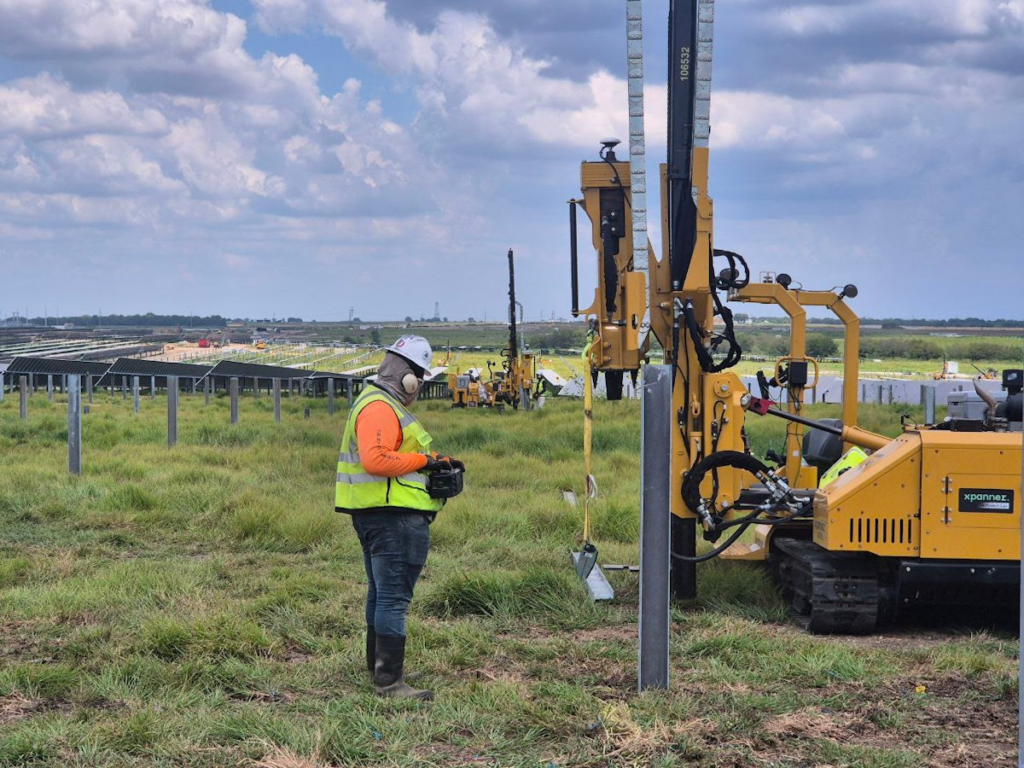Xpanner has recently launched its flagship X1 Kit, a retrofit Physical AI system engineered to automate existing construction machinery. In today’s landscape, where labor shortages and safety concerns are prevalent, the introduction of such technology is a timely response to the inefficiencies plaguing the construction sector. As traditional workforce challenges intensify, this kind of automation presents a pragmatic solution for small and medium-sized business (SMB) leaders in construction.
Xpanner was founded in 2020 in South Korea and expanded its operations to the U.S. in 2023. This innovative company is focused on developing solutions that are ready for automation, specifically tailored for the construction industry. The X1 Kit is versatile and can be integrated with various machines, functioning as a bridge to apply advanced technological capabilities to existing equipment. Currently, it is primarily being deployed on pile drivers, a decision based on its effectiveness in specific tasks.
The statistics shared by Xpanner regarding the X1 Kit are striking; it has reportedly reduced labor requirements by 80% and operational time by 50% during pile-driving processes in solar installations. Such metrics speak volumes about the potential benefits of implementing automation technologies. The system utilizes a combination of hardware controls, environmental data processing, and centralized software, enabling it to automate workflows while supporting remote monitoring and updates. This blend of capabilities signifies a step toward creating a more efficient, safer work environment.
For SMB leaders contemplating the integration of similar automation solutions, it’s essential to approach the process with a structured methodology. The first step involves conducting a thorough assessment of your current workflows and tasks that could benefit from automation. Identify the repetitive, time-consuming tasks within your operation. This could range from scheduling and procurement to equipment monitoring and data entry.
Once areas for improvement are identified, consider leveraging AI tools and automation platforms such as Make or Zapier. These platforms allow you to create workflows that integrate different applications and services, ultimately reducing manual intervention. For example, if your business relies on multiple applications for project management, communication, and time tracking, you can automate the flow of information between these tools. Imagine a scenario where project milestones in your management software automatically trigger updates in your time-tracking application, thus minimizing the need for manual entries and reducing errors.
To implement such automation, follow a step-by-step approach. After mapping out your processes and identifying integration points, start small. Choose one or two workflows to automate first. Set measurable objectives that allow you to evaluate the effectiveness of your automation efforts. For instance, if you automate the scheduling of equipment maintenance, monitor how often incidents occur compared to manual scheduling methods.
As you begin this journey, there are inherent risks to consider. Technology implementation can sometimes prompt unexpected consequences, whether through operational disruptions or employee resistance to changes in workflows. Therefore, it is crucial to involve your team in the process early on. Solicit feedback and provide training so they understand the benefits of automation and feel equipped to adapt.
The potential ROI from implementing automation technologies can be substantial. Increased efficiency can lead to faster project completion times and reduced labor costs. In addition, the improved safety outcomes derived from automation reduce the likelihood of accidents, which can be both financially and reputationally beneficial in the long run.
As you assess the financial aspect, consider the initial investment involved in upgrading or retrofitting machinery with systems like the X1 Kit. Weigh this against the anticipated savings and productivity gains. Each SMB may have a different threshold for what constitutes an acceptable investment, but the essential factor is to ensure that the long-term benefits outweigh the upfront costs.
In conclusion, the construction industry is undergoing a significant transformation driven by automation technologies such as the X1 Kit from Xpanner. For SMB leaders, the opportunity to enhance operations through automation should not be overlooked. By taking a methodical approach—evaluating workflows, utilizing AI tools, and training staff—businesses can successfully navigate the complexities of automation.
FlowMind AI Insight: Embracing automation is not just a matter of maintaining competitiveness; it’s about redefining how work is performed in the construction industry. By strategically implementing these technologies, SMBs can streamline operations and uncover new pathways for growth and efficiency.
Original article: Read here
2025-09-05 13:09:00

